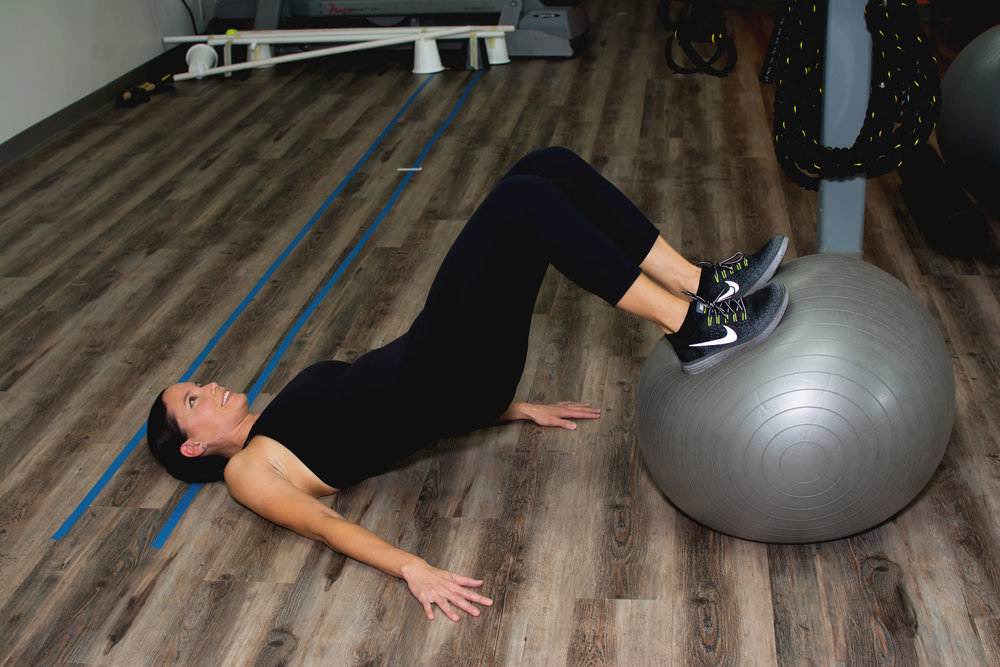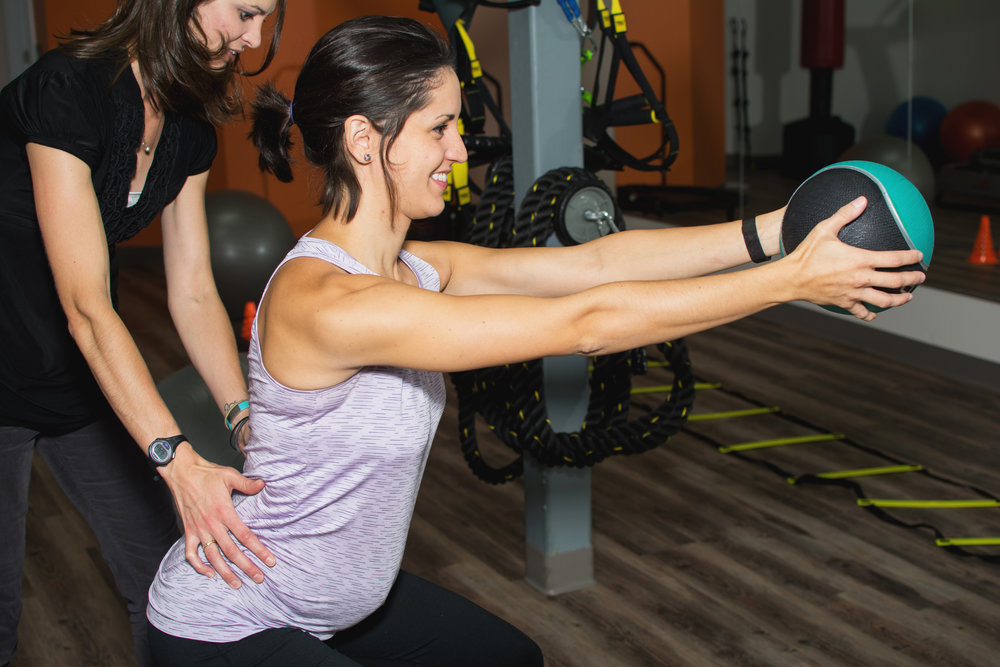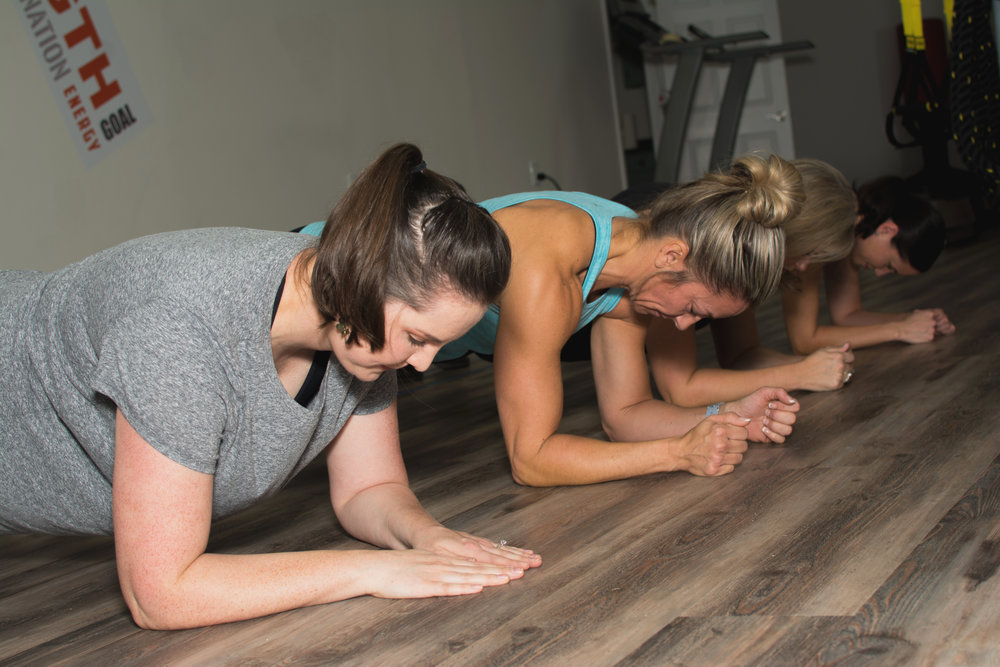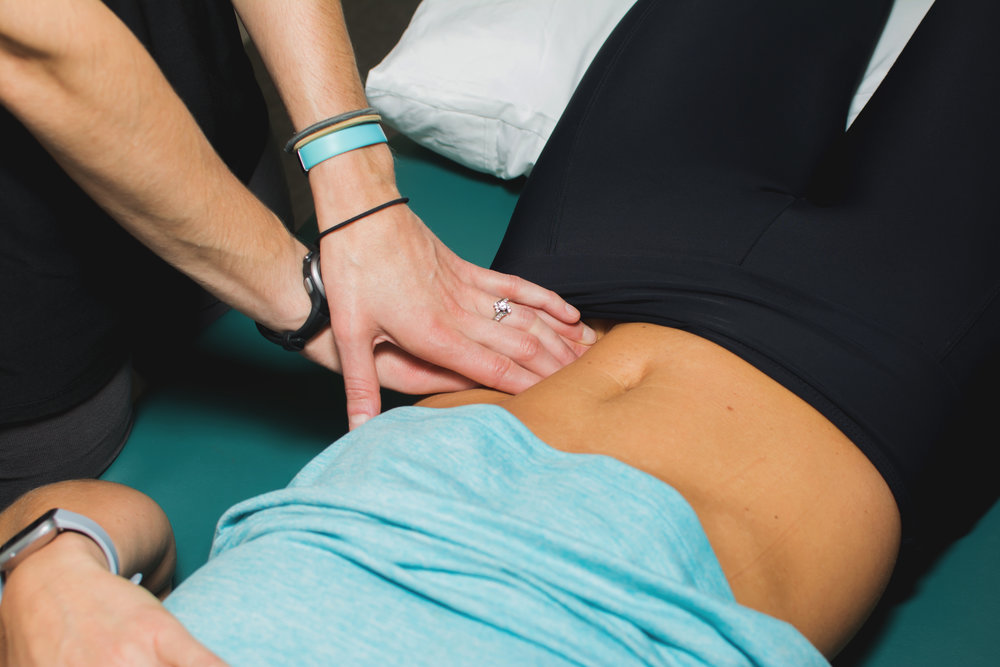Fact: growing babies in our bellies causes change in our bodies. These changes can result in Diastasis Recti Abdominis (DRA). Kelly of Priority PT is here to explain what it is is, how to tell if you have abdominal separation of Diastasis Recti, what to do to help, and how physical therapy can make a difference. Keep scrolling to catch her video and interview that goes into detail about this important topic!
What is Diastasis Recti?
Kelly: Diastasis Recti Abdominis (DRA) is a separation and/or thinning in the fascial connection along abdominal muscles specifically at the rectus abdominis (think 6-pack muscles). We diagnose a DRA with a sit up test using finger breadths as our measuring guide. Sometimes a Real Time Ultrasound Machine can look at the diastasis as well if you are in a clinic lucky enough to have one. We measure at three different spots on the belly and you can have one anywhere along the midline or linea alba. We measure a the belly button, 4-5 cm above and 4-5 cm below. We look for width (measured in finger breadths), depth, tension at the bottom and if you can connect or activate the deep core with a breath connection and create more tension. For a separation wider than a 2 finger-breath distance ,it would be considered a “DRA”. We can grade the separation based on finger-breaths and determine what level of DRA you have – (1) Non-diastasis Recti is a separation less than 2 finger breadths (2) Mild diastasis is a separation of 2-3 finger breadths (3) Moderate is a separation of 3-4 finger breadths (4) Severe is a separation of 4+ finger breadths.
What causes Diastasis Recti?
Kelly: Researchers estimate up to 100% of pregnant women have diastasis due to the belly accommodating the growing baby – so with that said it’s “normal” to have a separation during pregnancy and most of us have one. During pregnancy we encourage women to watch for what we call doming or bulging where the belly creates this separation visibly. I’d like to point out that men can have a DRA as well and it’s not just women who’ve had babies. Some studies show possible causes to include: *pregnancy, *multiple pregnancies, *C-sections, *abdominal surgery (laparoscopic surgeries, gallbladder removal etc), *people who have conditions where their collagen is not as strong (Ehlers-Danlos syndrome or other issues with laxity), *large changes in body mass (people who have a gastric bypass surgery) Other contributing factors include poor posture, poor breathing habits, poor lifting habits, poor bowel or bladder habits, and/or not resting enough immediately after delivery can contribute or can be correlated with the diagnosis.

How can you treat Diastasis Recti?
Kelly: There is mixed agreement among movement specialists on what to “specifically” do and there is NOT just a ONE right thing so it is important to find a specialist that aligns with your goals or can back up her rationale with research and literature. The first place to start is to determine the alignment or posture and breathing pattern an individual has. What your body is doing during a “rest” state can greatly play a role with what it does when it has to “work” (lifting, playing, exercising, standing, walking) The best exercises are working on connection with the deep core (diaphragm, pelvic floor, Transversus abdominis and hips) through breathing. Learning how to fire with the transversus abdominis with exhalation is often taught first and this is one of the best exercises you can do immediately after delivery as well . A women’s health physical therapist can also provide manual therapy techniques to help improve fascia/muscle and alignment. Therapists (as well as other specially trained providers and instructors such as Pilates instructors or yogis) teach postural corrections, breathing with movement, lifting techniques and sometimes the Noble technique (pulling the muscles together with your hands while doing a crunch type movement). The best treatment is one tailored to YOUR abilities. Having someone WATCH you and assess your daily activities can make a huge difference. It’s difficult for a lot of us to see ourselves especially during the day and with real life things (like putting kids in the tub, car or even lifting groceries). I would also say that the abdominal wall muscles need time to heal and that some will suggest bracing and rest however, once again, this is mixed in thought because fascia is best strengthened with controlled movements along a line of pull in which you are trying to strengthen.
Are there specific exercises you can do to help improve your abdominal muscles?
Kelly: The connection breath is a main focus. Learning to exhale with effort or exertion can create automatic engagement with the deep core and protect the abdominal separation, spine and pelvic floor. Once you are able to create that connection, we challenge the system with different movement patterns and body positions (think hands and knee contractions, kneeling, kneeling with arm motions etc) Any arm or leg exercises can also become a “core” exercise when you activate the transversus abdominis first to lift the core up and in. Being mindful of the abdominal muscle position is key with all exercise and can give you extra power and strength if utilized! Strengthening the whole system is key too – Strengthening the hips with bridges, clams and even step ups or split squats when appropriate can help the body toleration functional tasks better. Also strengthening the upper body to allow for proper posture from above can really help with all the tasks we have to do as baby grows with carseats and continued tasks at home/work/gym.


Can I eventually be cured or completely healed from Diastasis Recti?
Kelly: Absolutely! And just because you have a diastasis does not mean you are doomed forever to have a “weak core” or other problems. In fact according to research – there is no proof of increased low back pain, incontinence, prolapse, or other related problems for those who have a 2+ finger breadth diastasis. Time is key here – up to a year or even more is a realistic timeframe for true improvement. Consistency with the exercises is also key and how often you are working on that connection and deep core stabilization.
How can Priority PT help moms with abdominal separation?
Kelly: Therapists at Priority are trained to work specifically with women for postpartum recovery and can assess and address all of the above listed items. I have coined the program “B4 “- where we look at the 4 aspects that are greatly affected after babies. These include (1) breathing (2) belly (3) back (4) bum which all change after and during pregnancy. We can address pelvic floor issues, release fascia/muscles, and assess movement issues that are often seen and can contribute to poor posture and pain. Most of the time, when a mom is educated on what to do and what NOT to do, she can see changes in her diastasis fairly immediately. Because we are 1 on 1 for a full hour, we can address everything the mom is concerned with and will not be interrupted by other providers or clients.

Is there anything else you’d like to share?
Kelly: There is often a correlation with diastasis and umbilical hernias. The umbilicus or belly button is generally a weaker spot just because that was how we were made. Often this can be assessed by a medical provider and reduced even with the training we do for diastasis. Please do not be scared to move! Movement heals and a lack of movement can often make you feel worse – not to mention – reinforce poor movement patterns or create other compensations. I have worked with Native Pilates personally and I’d like to recommend Amanda Howard, CPI as a true specialist for pilates in this area as well if you want extra help and are ready to take back control or if you are already finished with a plan of care with a physical therapist.

Kelly, you always have such beneficial information. Thank you so much for sharing! If you’re a mama looking for some help with your postpartum recovery, be sure to contact Priority PT!

